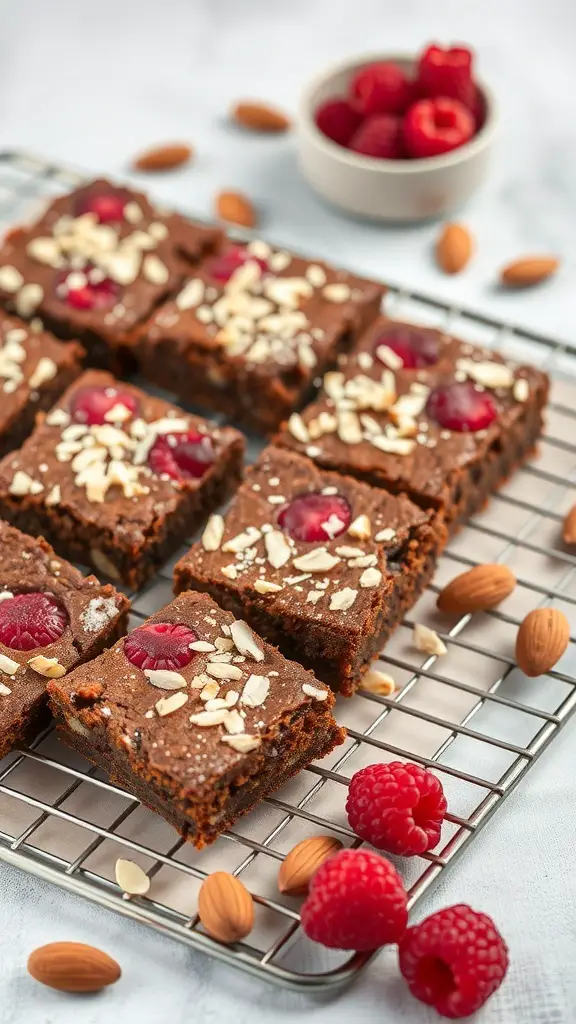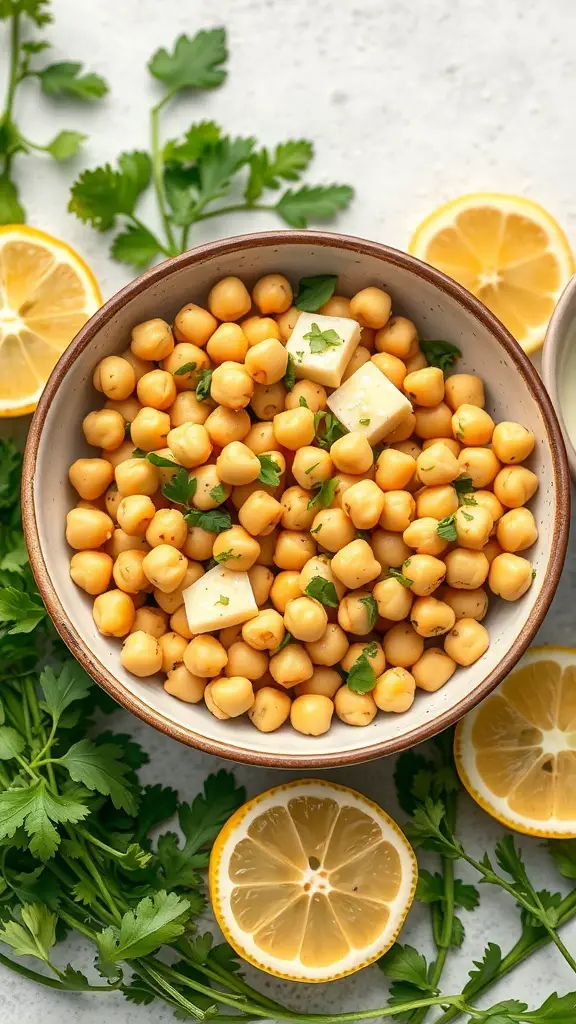
There’s something timeless and refreshing about a classic garden salad. It’s the kind of dish that brings a pop of color to any table, whether it’s a casual weeknight dinner or a summer picnic. I created this garden salad recipe after a long stretch of heavy meals. I craved something light, crisp, and full of natural flavor—but not boring. And that’s exactly what this salad delivers.
It’s a celebration of simplicity, seasonality, and vibrant texture. The kind of dish that reminds you how satisfying fresh veggies can be when they’re done right. If you’ve ever underestimated a salad before, this one might just change your mind.
Why I Love This Recipe
Fresh, flavorful, and incredibly easy to pull together—what’s not to love?
This garden salad is my go-to when I need something quick, wholesome, and truly satisfying. What makes it so special is its versatility. You can build it around what’s in season or what’s in your fridge. Each bite gives you crunch, juiciness, and the subtle tang of a homemade vinaigrette that ties everything together.
But beyond flavor, it’s about the ritual. Washing crisp lettuce leaves. Slicing bright cherry tomatoes. Whisking a simple dressing from pantry staples. It’s a grounding recipe, and there’s joy in that kind of kitchen simplicity.
It’s also the kind of dish everyone loves. Whether you’re serving it as a main with grilled chicken or as a side at a BBQ, it always gets eaten. No sad, soggy greens here—just a well-balanced mix of textures, colors, and flavors that people actually want to eat.
Ingredients for Garden Salad
Let’s talk ingredients—the heart of any great garden salad.
A good garden salad starts with fresh, crisp produce. This recipe embraces variety: leafy greens for volume, crunchy veggies for bite, and a few extras to make it feel complete. The beauty of it is you can mix and match, but there’s a solid foundation you’ll want to build from.
Here’s what you’ll need:
Base Greens:
- Romaine lettuce or green leaf lettuce – for crunch and structure
- A handful of baby spinach – adds tenderness and deeper flavor
- Optional: a few arugula or kale leaves for a peppery note
Vegetables:
- Cherry tomatoes or grape tomatoes – halved, juicy, and sweet
- Cucumber – sliced thin or into half-moons for crunch
- Red onion – finely sliced for sharpness
- Bell pepper – any color, diced or sliced thin for a touch of sweetness and color
- Carrots – shredded or ribboned for texture and color
Extras (optional but recommended):
- Avocado – cubed or sliced for creaminess
- Radishes – for a peppery crunch
- Croutons – for that classic finishing touch
- Feta or goat cheese – adds saltiness and a creamy finish
- Fresh herbs like parsley, dill, or basil – to brighten the flavor
For the Dressing:
- Olive oil – extra virgin for the best flavor
- Red wine vinegar or lemon juice – for acidity
- Dijon mustard – helps emulsify and adds tang
- Honey or maple syrup – just a touch for balance
- Garlic – finely minced or grated
- Salt and freshly ground black pepper – to taste
This combination creates a salad that’s light yet satisfying, fresh but deeply flavorful.
How Much Time Will You Need
This recipe is a quick win in the kitchen.
From start to finish, you’ll need about 20 minutes.
That includes washing and chopping your veggies, assembling the salad, and whisking up the dressing. If you’re really in a rush and you’ve got some pre-washed greens and store-bought dressing, you could even make it in 10.
But trust me—taking the full 20 minutes is worth it. A little extra time spent slicing veggies and shaking up your own vinaigrette makes a world of difference in flavor and texture.
How to Make This Garden Salad

Let’s walk through the process, step by step. It’s simple, but getting each part right will take your salad from good to great.
Step 1: Prep Your Greens
Start by washing your lettuce and spinach thoroughly. Use a salad spinner if you have one, or pat them dry with clean kitchen towels. Dry greens are essential—wet leaves will water down your dressing.
Chop or tear the lettuce into bite-sized pieces and place it in a large salad bowl. Add the spinach or any additional greens.
Step 2: Slice and Dice the Veggies
Wash and slice your tomatoes in halves or quarters, depending on size. Peel and thinly slice the cucumber and red onion. Dice the bell pepper into strips or cubes.
For carrots, use a grater, spiralizer, or peeler to create shreds or ribbons. If you’re adding radishes or avocado, now’s the time to prep those, too.
Step 3: Add the Extras
Sprinkle in crumbled feta or goat cheese if using. Add sliced avocado and a handful of croutons. Finish with fresh chopped herbs for an extra layer of flavor.
Step 4: Make the Dressing
In a small bowl or jar, combine 3 tablespoons olive oil, 1 tablespoon red wine vinegar (or lemon juice), 1 teaspoon Dijon mustard, ½ teaspoon honey, 1 minced garlic clove, and a pinch of salt and pepper.
Whisk or shake until fully combined and emulsified.
Step 5: Assemble and Toss
Drizzle about half the dressing over the salad. Toss gently with clean hands or salad tongs, making sure everything is lightly coated.
Taste and add more dressing if needed.
Step 6: Plate and Serve
Serve immediately, either in one large bowl for sharing or plated individually. Top with any last-minute herbs or a few extra croutons for crunch.
Substitutions
No cucumber on hand? Want to make it dairy-free? No problem.
This salad is incredibly flexible, and there are tons of ways to switch it up without losing the integrity of the dish.
Leafy Greens:
Swap romaine for butter lettuce, iceberg for crunch, or baby kale for a more nutrient-dense option.
Vegetables:
Don’t have cherry tomatoes? Use sliced heirlooms or grape tomatoes. No red onion? Try scallions or shallots for a milder bite.
Dressing:
Out of red wine vinegar? Use white wine vinegar, apple cider vinegar, or fresh lemon juice. Honey can be replaced with maple syrup or agave.
Cheese Alternatives:
Feta not your thing? Try blue cheese, parmesan shavings, or skip the cheese entirely for a dairy-free version.
No Croutons?
Use toasted nuts or seeds like sunflower, almonds, or pepitas for that crunchy element.
These swaps make the recipe easy to customize based on your dietary needs or what you have in the pantry.
Best Side Dishes for Garden Salad
Want to turn this salad into a full meal? Pair it with one of these simple sides:
- Grilled Chicken Breast: Lightly seasoned and grilled, it makes the salad a satisfying lunch or dinner.
- Garlic Bread: Adds a warm, comforting crunch and pairs beautifully with the fresh, tangy dressing.
- Soup of the Day: A classic tomato basil or vegetable soup brings balance and warmth to the crisp salad.
Serving and Presentation Tips
The beauty of a garden salad lies in its vibrant colors and crisp freshness. So when it comes to presentation, it’s all about letting those natural ingredients shine.
Serve your garden salad in a wide, shallow bowl or a large wooden salad bowl—something that shows off all those gorgeous layers. Make sure you toss the salad just before serving, so the greens stay perky and the dressing doesn’t wilt them.
You can also build it in layers if you’re hosting and want to impress. Start with greens at the bottom, then add stripes or clusters of chopped vegetables for a “rainbow” effect. Scatter cheese, herbs, or nuts on top and offer the dressing on the side so guests can add as much as they like.
To really elevate the look, finish with a crack of black pepper and a drizzle of olive oil right before serving.
Tips and Tricks to Make This Recipe Even Better

If you’ve ever thought salads were boring, you probably haven’t had one that’s built right. Here’s how to take your garden salad from average to amazing.
Use seasonal produce: Freshness is everything. Summer tomatoes, spring radishes, or fall carrots each add peak flavor and texture.
Dry your greens thoroughly: This step is non-negotiable. Wet greens dilute your dressing and lead to soggy salad. Use a salad spinner or pat dry with paper towels.
Cut your veggies uniformly: It doesn’t have to be perfect, but consistent sizes help ensure every bite feels balanced.
Balance textures: Think crunchy (carrots, peppers), juicy (tomatoes, cucumbers), creamy (avocado, cheese), and crisp (lettuce). The contrast keeps things interesting.
Make the dressing ahead: Letting the dressing sit for 10–15 minutes allows the garlic and mustard to mellow and the flavors to meld. It’ll taste more cohesive and flavorful.
Toss gently and right before serving: Over-tossing breaks down delicate greens. Toss with care and serve immediately to maintain crunch.
Common Mistakes to Avoid
Making a garden salad sounds simple, but a few easy missteps can really bring it down. Avoid these common salad mistakes to keep your dish fresh and crave-worthy.
Overdressing the greens: One of the biggest salad fails. Start with a little dressing and add more if needed. Too much will weigh the salad down and make it soggy.
Chopping everything too big (or too small): Oversized pieces make it hard to get a good mix of flavors in every bite. On the other hand, tiny chopped veggies can get lost. Aim for bite-sized.
Using limp or old greens: If your greens look wilted or slimy, the salad won’t have that satisfying crunch. Always choose fresh, crisp produce.
Skipping seasoning: A little salt and pepper in the dressing and sprinkled over the finished salad helps bring all the flavors together.
Making it too far in advance: Garden salad is best served fresh. Prep your ingredients ahead of time if needed, but don’t combine them until just before serving.
How to Store It
If you happen to have leftovers (which isn’t often with this salad), here’s how to store them to keep things crisp.
Undressed salad: Store in an airtight container in the refrigerator for up to 3 days. If you’ve washed your greens properly and dried them well, they’ll stay fresh longer.
Dressed salad: Best eaten the same day. However, if you do need to save it, place it in a container lined with a paper towel to help absorb excess moisture. Eat within 24 hours.
Dressing: Store separately in a jar with a tight lid for up to a week. Shake well before each use.
To prep ahead, chop your veggies and store them in individual containers. Then assemble just before serving for max freshness.
FAQ
Can I make this garden salad ahead of time?
Yes—just keep the greens, veggies, and dressing separate. Combine them right before serving to keep everything crisp and fresh.
What protein can I add to make it a meal?
Grilled chicken, shrimp, chickpeas, hard-boiled eggs, or even canned tuna work well. Each adds a satisfying punch of protein without overwhelming the flavors.
Is this salad vegan?
The base recipe is vegan-friendly if you skip the cheese or use a plant-based version. Be sure your dressing is free of honey if needed—swap in maple syrup or agave.
Can I use bottled dressing instead of homemade?
Absolutely—but homemade dressing is super easy and elevates the flavor significantly. If you’re short on time, a quality store-bought vinaigrette works just fine.
How can I make this salad kid-friendly?
Go light on onions, skip anything too bitter like arugula, and maybe add some fruit—like apple slices or grapes—to make it more appealing. A mild, creamy dressing can help too.

Garden Salad Recipe
- Total Time: 20 minutes
- Yield: 4 1x
- Diet: Vegetarian
Description
This garden salad is a fresh, colorful medley of crisp greens and crunchy veggies, tossed in a simple homemade vinaigrette that brings everything to life. It’s easy to make, endlessly customizable, and pairs beautifully with any meal. Whether you’re serving it as a side dish or adding protein to turn it into a main, this salad will become your go-to for clean, wholesome eating. It’s proof that healthy doesn’t have to be boring—it just needs to be done right.
Ingredients
- 1 head romaine lettuce, chopped
- 2 cups baby spinach
- 1 cup cherry tomatoes, halved
- 1 cucumber, thinly sliced
- ½ red onion, thinly sliced
- 1 bell pepper, diced
- 1 carrot, shredded
- 1 avocado, diced (optional)
- ¼ cup crumbled feta or goat cheese (optional)
- Fresh herbs like parsley, dill, or basil
- Croutons (optional)
2. Dressing:
- 3 tablespoons extra virgin olive oil
- 1 tablespoon red wine vinegar or lemon juice
- 1 teaspoon Dijon mustard
- ½ teaspoon honey or maple syrup
- 1 garlic clove, minced
- Salt and black pepper, to taste
Instructions
- Wash and dry greens thoroughly. Chop into bite-sized pieces.
- Slice and prepare all vegetables.
- In a small jar or bowl, whisk together all dressing ingredients.
- Add greens and veggies to a large salad bowl.
- Pour in dressing and toss gently to combine.
- Top with cheese, avocado, herbs, and croutons if using.
- Serve immediately.
Notes
- For best results, use fresh, seasonal vegetables. Store dressing separately if making in advance. Customize with your favorite add-ins like nuts, seeds, or proteins.
- Prep Time: 20 minutes
- Cook Time: 0 minutes
- Category: Salad
- Method: No-Cook
- Cuisine: American
Nutrition
- Serving Size: 4
- Calories: 175
- Sugar: 4g
- Sodium: 210mg
- Fat: 14g
- Saturated Fat: 3g
- Unsaturated Fat: 10g
- Trans Fat: 0g
- Carbohydrates: 10g
- Fiber: 3g
- Protein: 3g
- Cholesterol: 6mg











